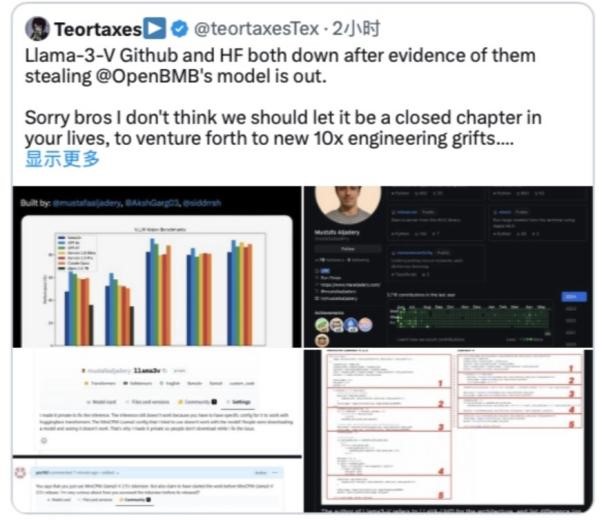Recently, the incident of the Stanford University AI team allegedly plagiarizing the large model of China's Tsinghua University has attracted widespread attention. The Llama3-V model released by the team is alleged to have a high degree of similarity in structure and code with the MiniCPM-Llama3-V 2.5 model of Face Wall Intelligence. Faced with plagiarism allegations, the Stanford team chose to delete the relevant codebase and disappear, sparking widespread public discussion.
Basis for plagiarism allegations
According to netizens' revelations, the architecture, code, and configuration files of the Llama3-V model are almost identical to those of MiniCPM-Llama3-V 2.5, with only changes in the variable name. In addition, Llama3-V uses the tokenizer of MiniCPM-Llama3-V 2.5, and even the special symbols are exactly the same, which is difficult to explain by chance.
Response from the Stanford team
Faced with accusations of plagiarism, the Stanford team initially argued that their work predates Facewall's MiniCPM, simply using their tokenizer, and said that the original model had been removed. However, this response did not quell the public's suspicions, and was interpreted as a "runaway" because of the act of deleting the codebase.

Pictured: The Stanford AI team is suspected of plagiarizing the Tsinghua large model
In-depth analysis
This incident is not just a simple plagiarism issue, it reflects the deep-seated problems in academia and industry in terms of intellectual property protection, academic integrity, and international cooperation.
1. Intellectual Property Protection: In today's globalized world, intellectual property protection is particularly important. This incident reminds us that both academic research and commercial application must respect the fruits of the original author's labor and abide by the relevant laws and regulations on intellectual property rights.
2. Academic Integrity: Academia relies on integrity systems to maintain its authority and impartiality. Plagiarism undermines the system, damages the reputation of the academic community, and affects the credibility of academic results.
3. International cooperation: In high-tech fields such as AI, international cooperation is becoming more and more frequent. This incident reminds us that in international cooperation, we need to establish a clearer and more transparent cooperation mechanism to protect the rights and interests of all parties and promote genuine academic exchanges and technical cooperation.
comments
The actions of the Stanford team, whatever the motives, have already taken a toll on the integrity system of the academic community. The founders' so-called "internationally recognized" response has not only failed to quell the controversy, but may have exacerbated public concerns about academic misconduct.
Both academia and industry should learn from this incident, strengthen the protection of intellectual property rights, safeguard academic integrity, and promote healthy international cooperation. At the same time, it is also necessary to strengthen the review and supervision of academic achievements to prevent the recurrence of similar incidents.
conclusion
The Stanford team's plagiarism incident is a cautionary tale that we cannot ignore ethical and legal constraints while pursuing technological innovation. Only by establishing a sound protection mechanism and integrity system can we truly promote the healthy development of science and technology and safeguard the purity and fairness of the academic community.






